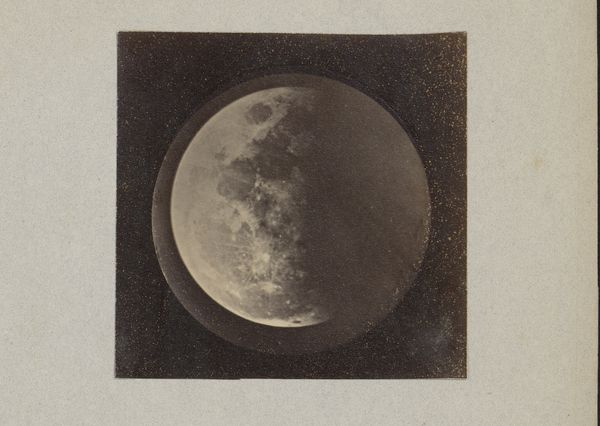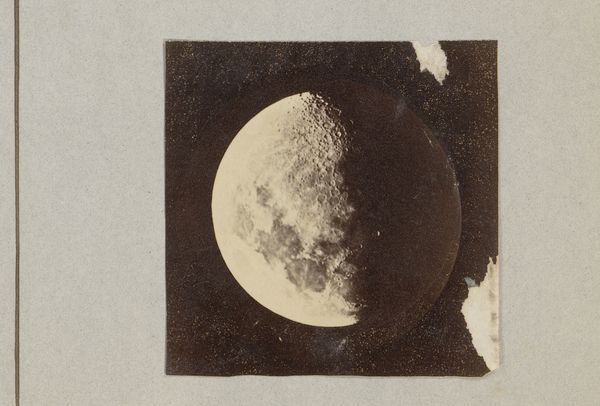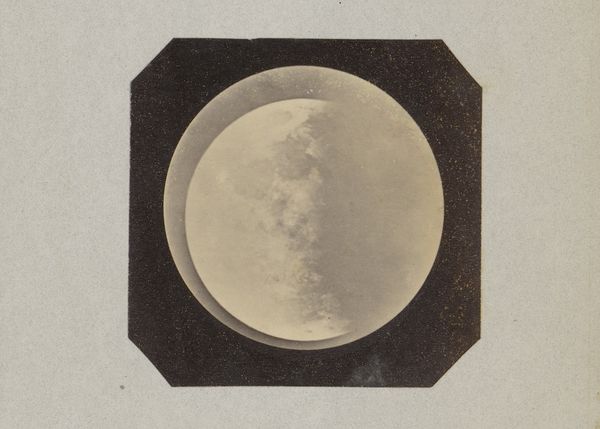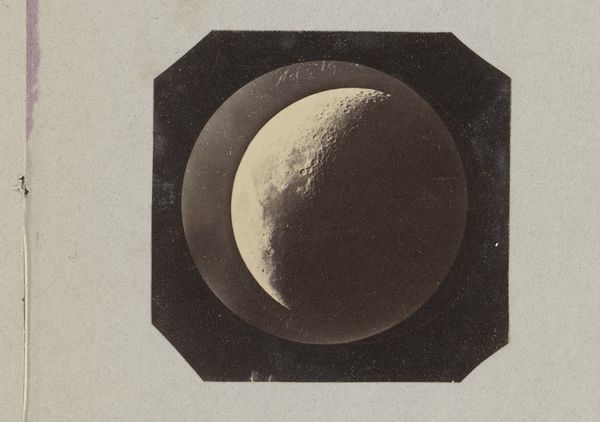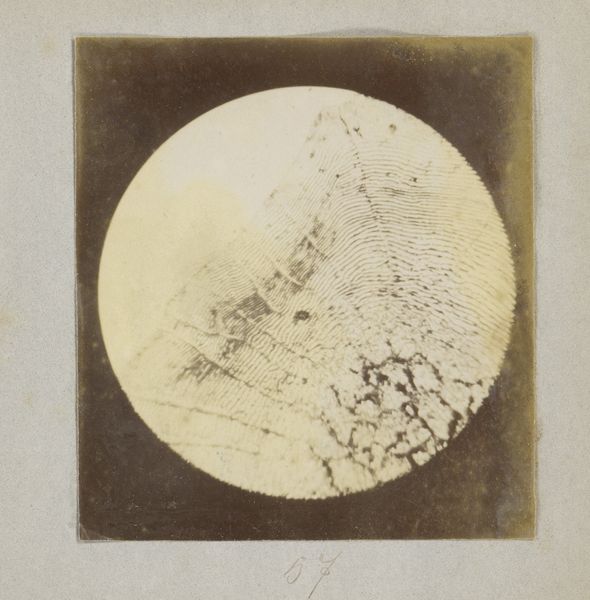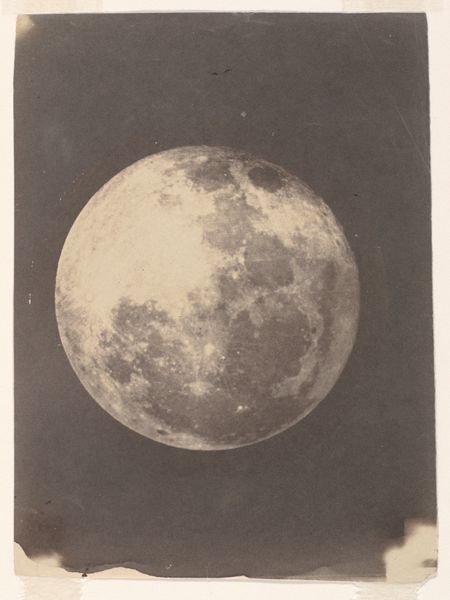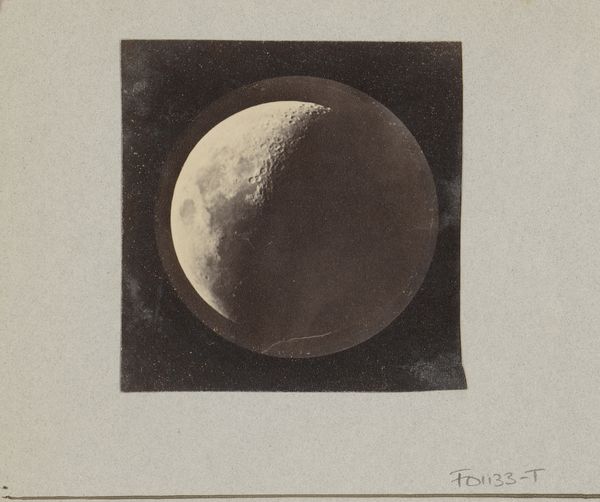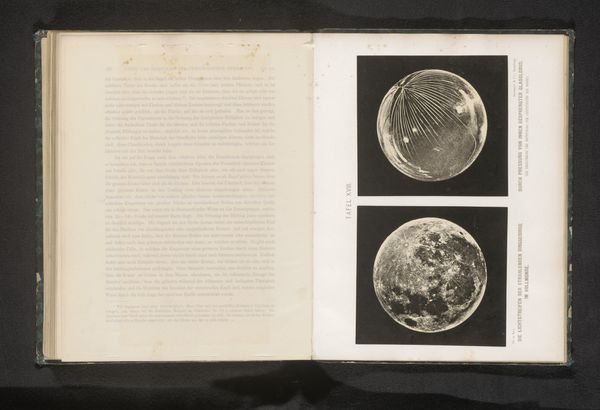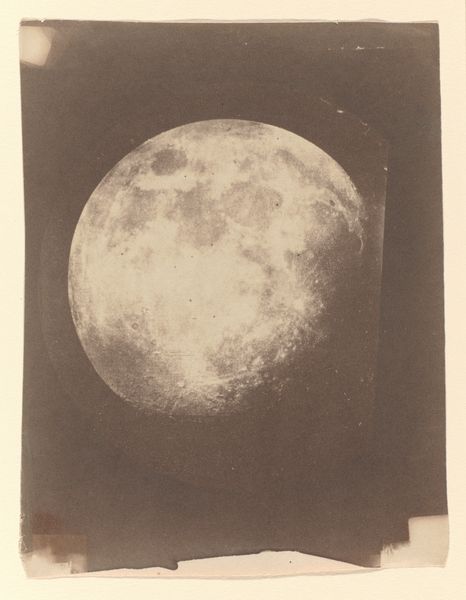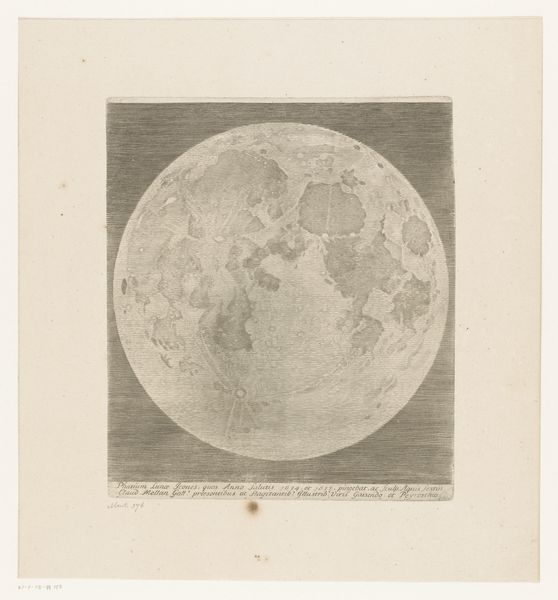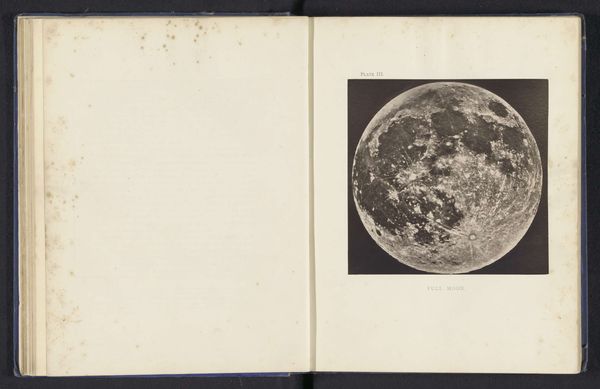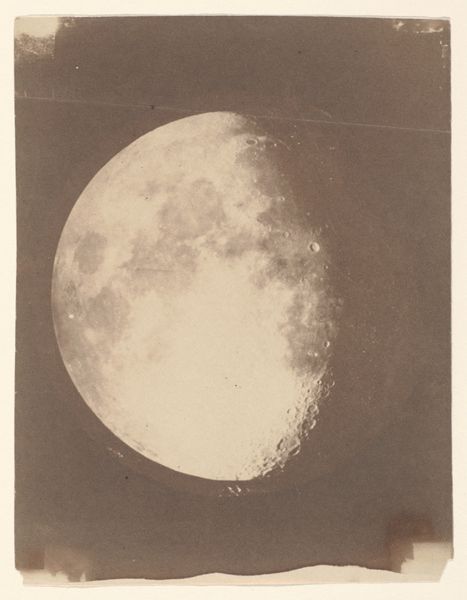
Fotoreproductie van foto door Warren de la Rue van vlekken op de maan 1887 - 1888
0:00
0:00
Dimensions: height 68 mm, width 68 mm
Copyright: Rijks Museum: Open Domain
Curator: It's fascinating how such a simple image can hold so much history. This is a photo reproduction of a photograph taken by Warren de la Rue, dating back to 1887-1888. The subject, as you can see, is the moon. Editor: It’s like gazing into an aged mirror reflecting back a ghostly orb. There's an immediate sense of tangible process, of alchemical creation, isn't it? All the photographic paper grain shows and toning. What materials were involved exactly? Curator: This specific version is presented as a gelatin-silver print, or possibly an albumen print depending on which phase of its life, marking an interesting point in photographic reproduction and distribution, the transition into reproducible negatives for printing. These prints were essential for disseminating astronomical knowledge at the time. Editor: Essential indeed, but let's consider the labour, skills, the very real act of looking and doing—of materially intervening with reality through this new technology. Before widespread commercial space observation and imaging technologies existed, artists such as Filbri took astronomical observation seriously. I suppose there would've been considerable prestige for people to get to engage with this medium? Curator: Certainly. Observatories and scientific institutions saw photography as an objective tool. However, that claim of objectivity masks many social and economic realities and implications. Who funded this research, who had access to observatories, how this imagery reinforced or challenged existing cosmologies is an ongoing study. This one belonged to Marinus Pieter Filbri. Editor: Which raises all sorts of questions about why Filbri reproduced it and its subsequent reception and preservation; did his practice represent new artistic approaches and markets for it as a technology? I see a bridge here between artistic Romanticism and emerging photographic Realism; very early photographic paper must've been rare still at this period. Curator: Exactly! How it's framed matters too; institutions influence what's deemed photographically "artistic" or "scientific". The very act of framing gives some visual meaning about a certain institutional prerogative toward shaping visual communication during the height of astronomy's popularity at that point in history! Editor: Seeing the subject isolated, with a sort of aged patina really reminds us of our own existence in the context of time, skill and technical developments of astronomy as a means of interpreting our own place in the cosmos. A tangible creation in our hands as viewers that echoes time as a witness... Curator: Precisely. These historical photographs remind us that even seemingly objective images are steeped in social and institutional contexts. It allows us a glimpse into how knowledge and public communication are formed in that time.
Comments
No comments
Be the first to comment and join the conversation on the ultimate creative platform.
